Electronic Drums: Pros & Cons You Need To Know Before Buying

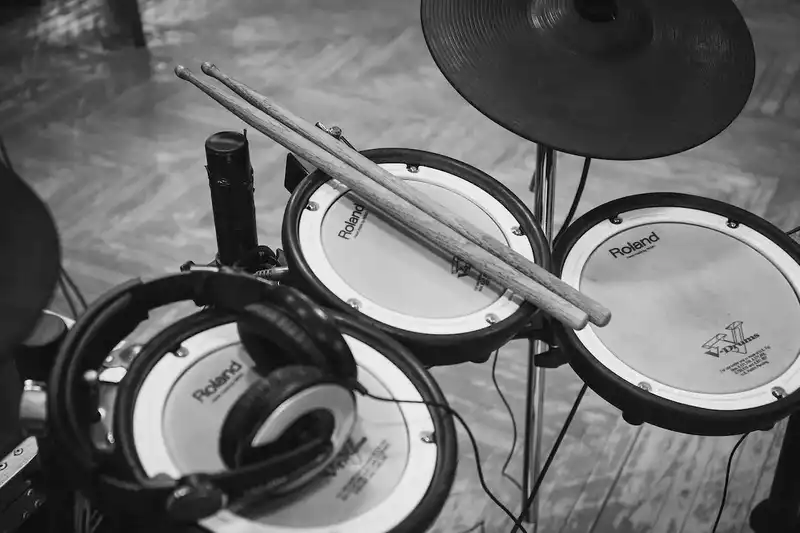
The art of drumming has evolved over the years. Technological advancements have revolutionized the industry with electronic drums being one of the most notable milestones.
From beginners to professionals, electronic drums have become incredibly popular and advantageous to use in certain situations. However, electronic drums do come with pros and cons.
The cost of performance-level drum sets and the requirement of electricity are two major cons; however, electronic drums are still extremely versatile and easier to maintain than acoustic drums.
The feel and rebound of electronic drum pads may take some getting used to, but the recording process becomes easier with the ability to plug in to a computer directly and get crisp, clear tones immediately and consistently.
You may feel overwhelmed at first with the buttons, knobs and the plethora of settings available on an electronic drum set, but one key tradeoff is having precise volume control. The learning curve to getting the most out of an electronic drum set can be overcome with time, patience and practice.
Let’s take a closer look at some of the pros and cons of electronic drums.
Table of Contents
Pros of electronic drums
Pro #1: volume control
One of the primary advantages of electronic drums is the volume control. Electronic drums can be played using headphones as the sole output for audio, making them ideal for practice sessions without bothering others with the noise.
For the gigging drummer, having volume control will prevent the drums from overpowering other instruments and vocals. This is especially important for smaller venues.
Some of the more advanced electronic drum sets come with additional features, such as adding compression to the sound of the drums and cymbals. A great way to dial-in the perfect sound in any real, or virtual space.
It can be possible to play an acoustic drum set at a lower volume, but this sometimes requires different sticks and some level of technique and finesse from the drummer in order to maintain control.
For performances that need volume control, an electronic drum set can give the drummer peace of mind and let them focus on what they are playing, and not so much on how they are playing it.
Pro #2: versatility
Most electronic kits come with a wide variety of different settings, drum tones and sounds which can be customized to suit the drummer’s preferences.
The control panel on an electronic drum set, commonly known as the ‘brain’ or ‘module’, will have the sound samples programmed into its software. If it’s your first time using the drum set you may need to refer to the manual to understand how to adjust the settings for the entire kit and each individual pad, but the learning curve shouldn’t be too difficult. Most modules are user-friendly.
Drum sets like the Yamaha DTX6K2-X that are accompanied with a more robust module can come with some pretty awesome features that you may not get with entry-level drum sets:
- Ambience: adjusts the sound of the drums and cymbals for a more “wet” or roomy sound.
- Compression: combined with volume control, this will help maintain a crisp sound at the maximum volume without sacrificing tone and blowing thresholds.
- Effect: increase or decrease additional expression to the drum’s sound.
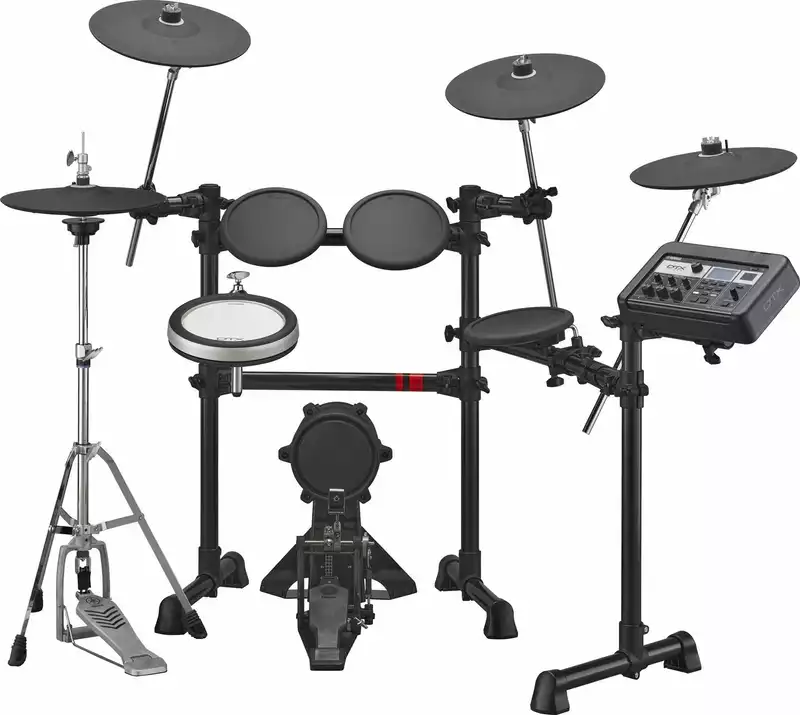
An electronic drum set is especially useful for different genres of music. Modern genres like EDM and hip hop can benefit from the ability of electronic drums to produce sound effects, trigger samples and unique beats that are not possible with acoustic drums.
Pro #3: low maintenance
Compared to acoustic drums, electronic drums require less maintenance. This is a big advantage for busy drummers. To keep an acoustic drum set in top shape, you need to think about:
- keeping the drums tuned
- damaged or worn heads
- cracked cymbals
- individual cases for storage and/or transport
- stick replacements
- snare wires
- potentially losing your drum key
The rubber or mesh heads that electronic drums are made of will typically last much longer than drum heads on an acoustic kit. The rubber/mesh heads also do not require tuning which can save time and money.
Some mesh heads can be ‘tuned’ to adjust the rebound and overall feel of the head, but this would not affect the sound.
The Roland V-Drums TD-1K is one example of an entry-level drum set that uses rubber heads.
The Alesis Turbo Mesh Electronic Drum Set is another entry-level drum set that uses mesh heads.
Pro #4: recording
Electronic drums are great for recording sessions.
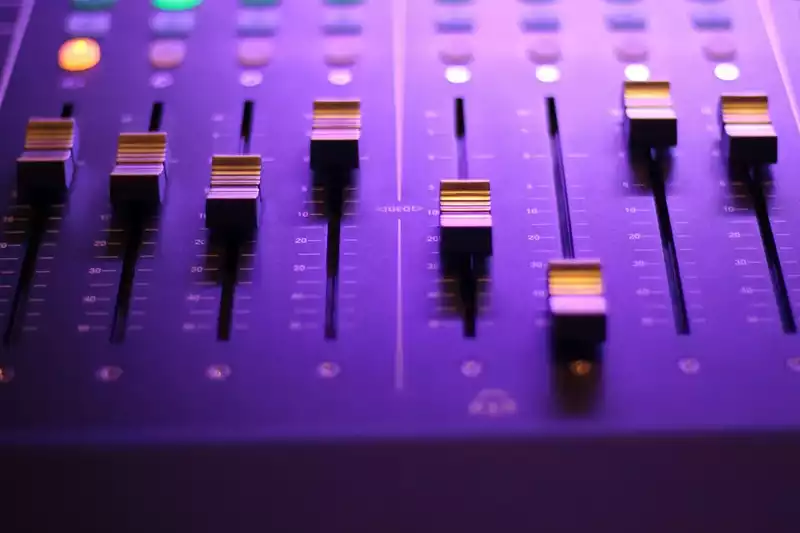
With the ability to plug directly into the computer or mixer, it makes the editing process much more fluid. Every stroke on the drums and cymbals will have a consistent and high-quality tone.
Unless you have the money to spend at a recording studio with the necessary equipment to record acoustic drums, electronic drums provide an accessible alternative to creating professional-sounding tracks.
Pro #5: portability
In general, most electronic drum sets are more portable than acoustic drums. An electronic kit can be disassembled and transported in a single carrying case in some instances.
This is obviously subject to the type of drum set, factoring in the size of the drum set and what kind of hardware is used to hold the pads, but typically an electronic drum set requires fewer cases and less space. This can make life easier for the drummer on-the-go.
Cons of electronic drums
Con #1: lack of authenticity
While electronic drums can provide a wide range of unique sounds, the feel of an acoustic drum set is difficult to replicate.
For the casual drummer this may not be something to worry about, but for advanced and professional drummers, this is a big deal. The rebound of the sticks on the drum heads, the sound of the cymbals when struck at different angles and the technique used by the drummer can all play important roles in how an acoustic drum set will sound.
This is important to consider for a drummer’s performance and expression. Some genres that require a more natural and organic sound will just simply sound better when a drummer can utilize their skill and technique on an acoustic set.
For beginners, I personally recommend starting on an acoustic drum set, if possible. I found it to be easier to transition from acoustic to electronic.
Practicing rudiments and getting used to how acoustic drums feel will prevent bad habits from forming and will be more beneficial for proper technique training in the long run.
Con #2: cost
Electronic drums always require some piece of equipment to output the sound when a pad is struck. The most common example is a pair of headphones plugged into the control panel of the drum set.
If the drums are being used for performance or without headphones, a computer or sound system is required. This extra equipment can add to the overall cost and sometimes make the drum set unaffordable, or just not feasible, depending on the situation and space required.
There are affordable options for beginners or drummers on a budget and there are some higher-end models of electronic drum sets that cost as much as acoustic drums.
The Roland TD-50K has a hefty price tag of $6399 USD, but is one of the best and most highly rated electronic drum sets on the market. The amount of features and sounds available in this drum set is mind-blowing. Plus, it just looks awesome.
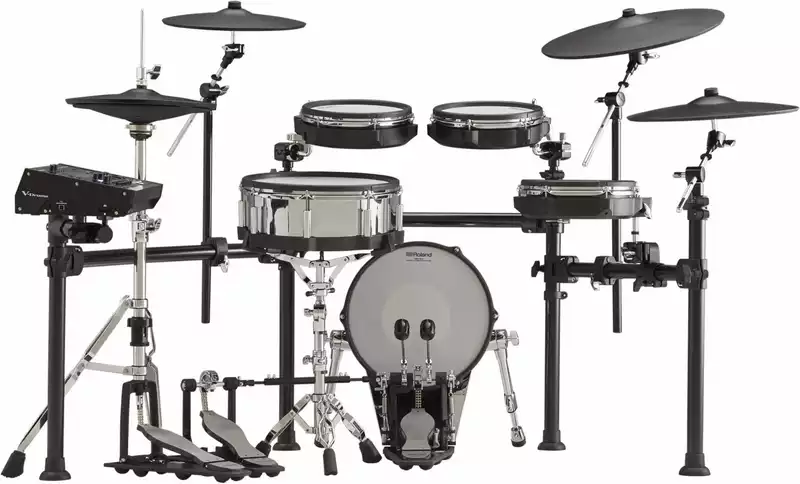
On the entry-level side of the playing field, you can still find quality drum sets like the Behringer XD8USB for $419 USD and the Alesis Turbo Mesh Electronic Drum Set for $329 USD.
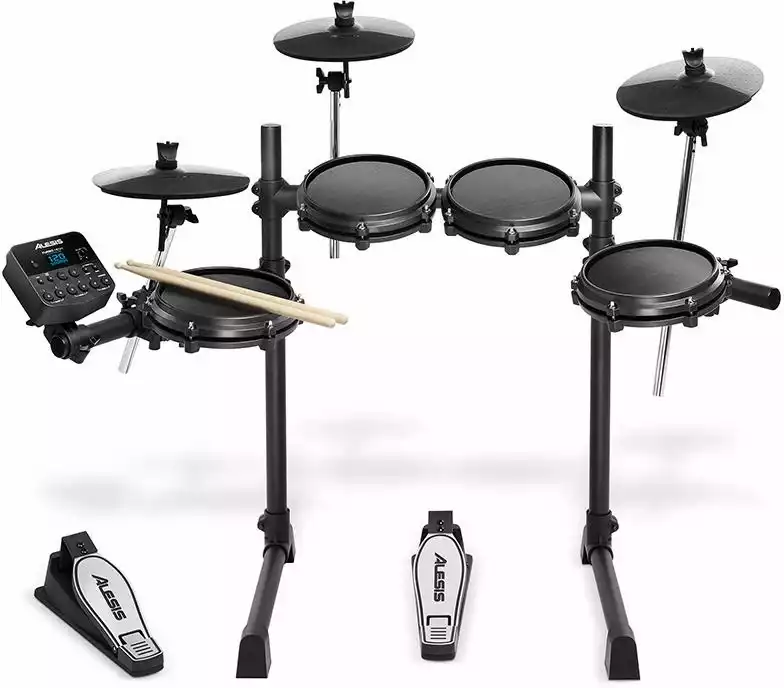
Con #3: limited dynamic range
While electronic drums can produce high-quality audio consistently with a large selection of unique sounds and tones, they still lack the volume range of acoustic drums.
As mentioned before when talking about the lack of authenticity, the expression of the drummer can get lost in electronic drums. For music that requires a certain level of expression, the drummer is not able to translate that emotion and intensity to the electronic drum pads in the same way they would be able to with acoustic drums.
This limited dynamic range can affect a drummer’s performance and the overall sound of the music in the final mix.
With technology always moving forward, there have been advancements in the field of electronic drums. Some of the higher-end models allow for more expressive play-styles with their ability to detect how the drummer strikes the pad and where on the pad it was struck, slightly altering the sound of the drum.
A drum set like the Yamaha DTX6K2-X has what are called ‘zones’ on the snare pad and the cymbal pads. Using a cymbal pad as an example, the zones for the edge, middle, and bell of the cymbal will produce different sounds.
Some kits will even detect rim shots on the snare pad as well.
While having these zones on the pads is a welcomed and much-needed feature, they have not yet become universal for all electronic drums. You probably won’t get this feature with most of the entry-level electronic drum sets.
Con #4: dependence on technology
Electronic drums do not work at all without electricity. This can be problematic for drummers playing at outdoor venues or anywhere without easy access to a power source.
Some or all pieces of the drum set may stop working if a cable fails or if a connection comes loose. If equipment fails or malfunctions, this may prevent the drums from being usable at all.
While an electronic drum set may potentially be easier to transport, it will always be bound to power outlets and the length of the power cable. Investing in additional equipment like extension cords and power bars would be a wise decision if you plan on gigging with electronic drums.
Con #5: learning curve
We discussed earlier how electronic drums have a different feel and response compared to acoustic drums, which can make transitioning from electronic to acoustic a bit more difficult, opposed to the other way around.
The biggest learning curve with electronic drums is figuring out how to use all of the features and settings in the brain.
A higher price tag is usually accompanied by a more complex brain when it comes to electronic drums. This can be overwhelming for beginners, but once all of the features and settings are figured out it is almost impossible to not have fun behind the kit.
The Simmons Titan 20 is an example of a smaller module with a nice added feature of allowing the connection of a smartphone.

As we’ve seen before, the Roland TD-50K has one of the most complex modules and a huge amount of features and settings to play with.
Conclusion
After reviewing some of the pros and cons of electronic drums, it ultimately boils down to the drummer’s preferences, needs and budget.
If you need a drum set for a quiet space that requires less maintenance, I recommend electronic drums. Additionally, any kind of electronic drum set, big or small, is great for recording sessions. Especially for genres of music like EDM, dubstep, or hip hop, just to name a few.
If noise isn’t an issue, if you plan on gigging with your drum set and do not specifically need electronic drums, then acoustic drums would likely be the better option. The dependency on electricity and the possibility of equipment failure could be troublesome if the drums are doing a lot of moving around.
To make the most out of electronic drums, it is wise to consider the factors mentioned in this article. There are situations in which electronic drums can be more beneficial, but make no mistake, electronic drums cannot completely replace the sound and feel of acoustic drums.
You may also like
Who we are
AboutDrumming.com is run by a group of drum teachers, drumming professionals and hobbyists. We love all things drums, and when not drumming we spend our time adding more awesome content to this website!
Free tools
You may also like
- Best Drums For Toddlers: Wood, Electronic And Hand Drums
- How Much Does A Drum Set (Acoustic & Electric) Cost In 2023?
- Drums Too Loud When Practicing? Here's What You Can Do
- How to Practice Drums Without a Drum Set: Improve Your Skills at Home
- Are Acrylic Drums Right For You? Pros And Cons Explained
Affiliate Disclosure: When relevant AboutDrumming.com uses affiliate links (at no additional cost to you). As an Amazon Associate I earn from qualifying purchases.